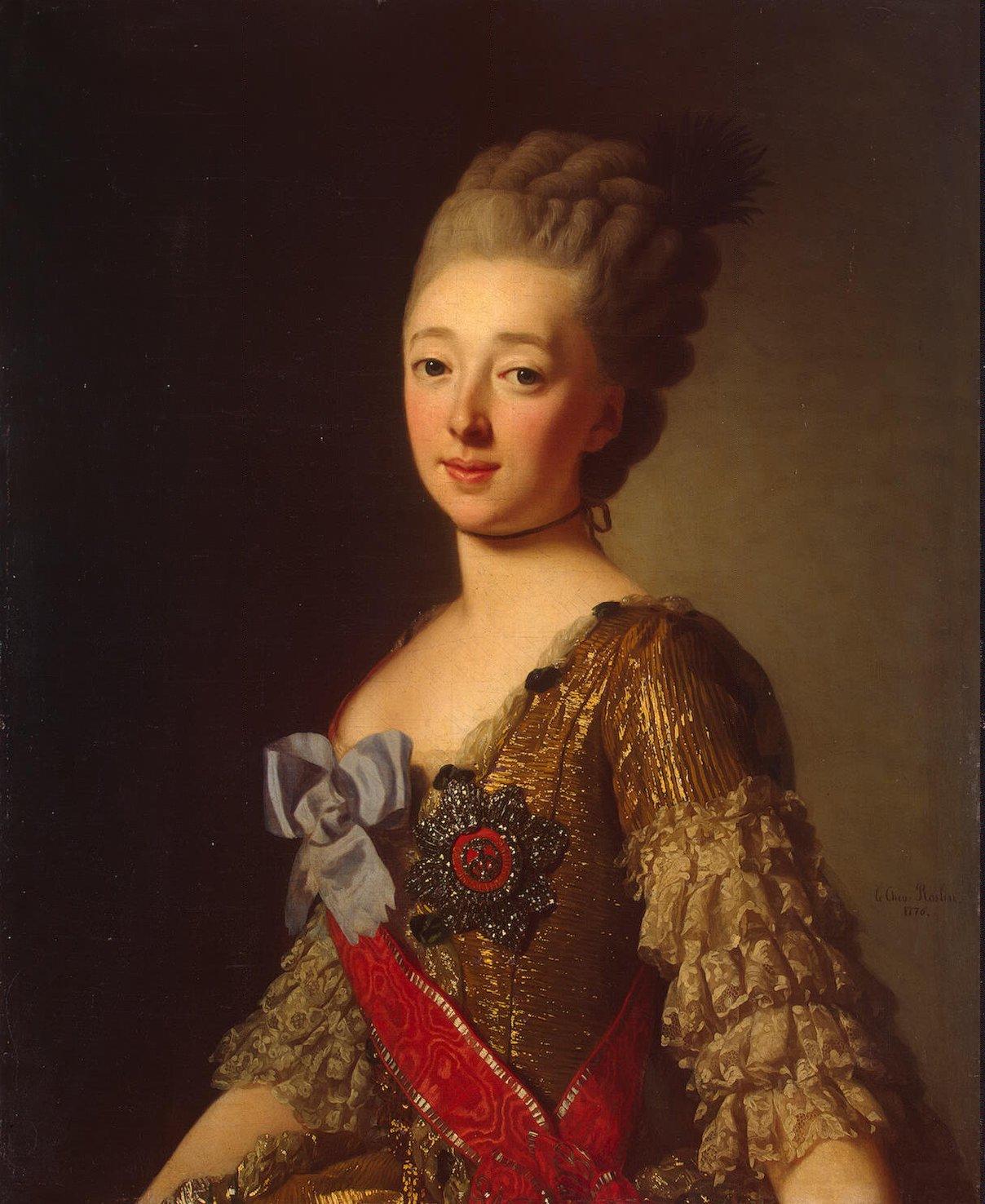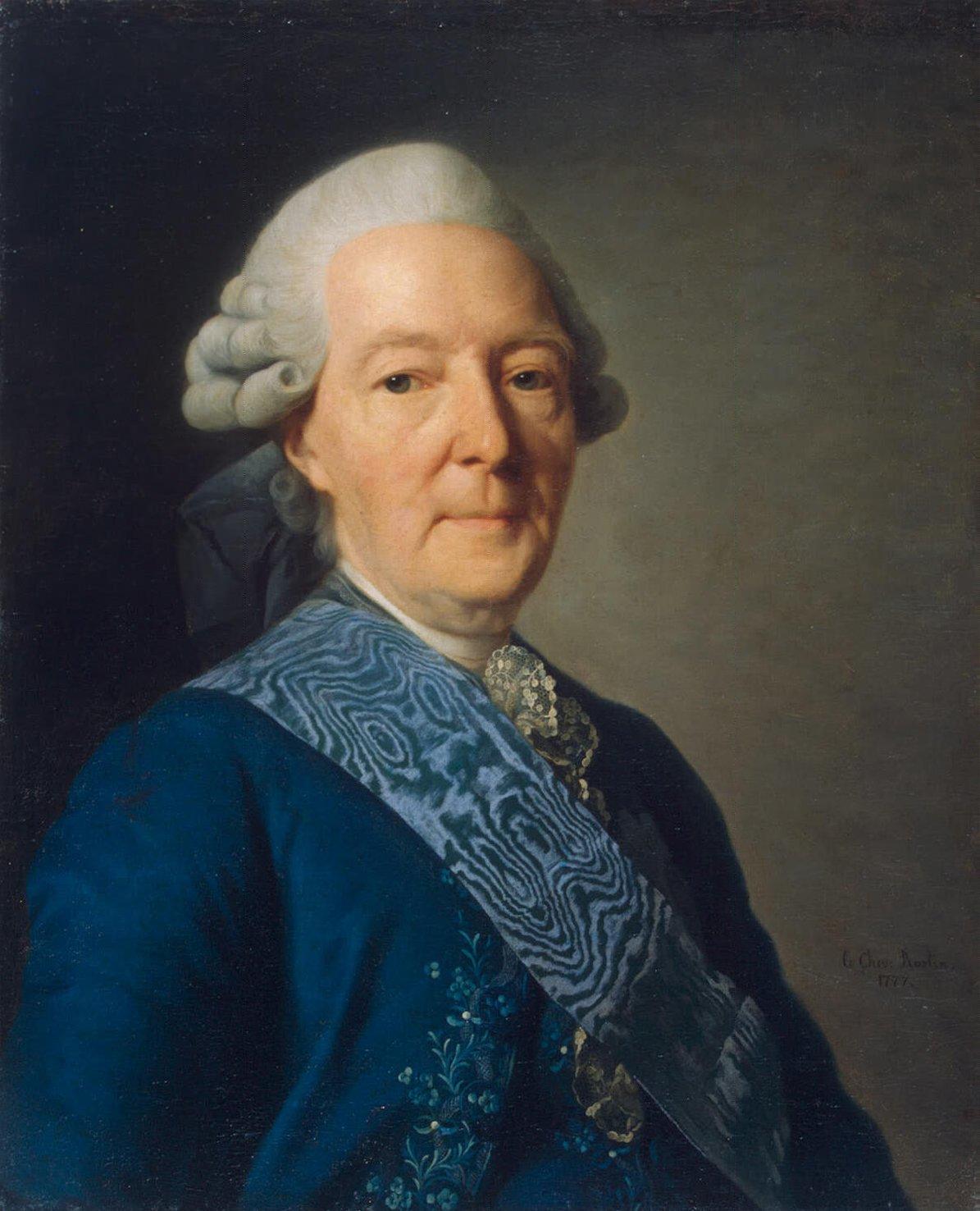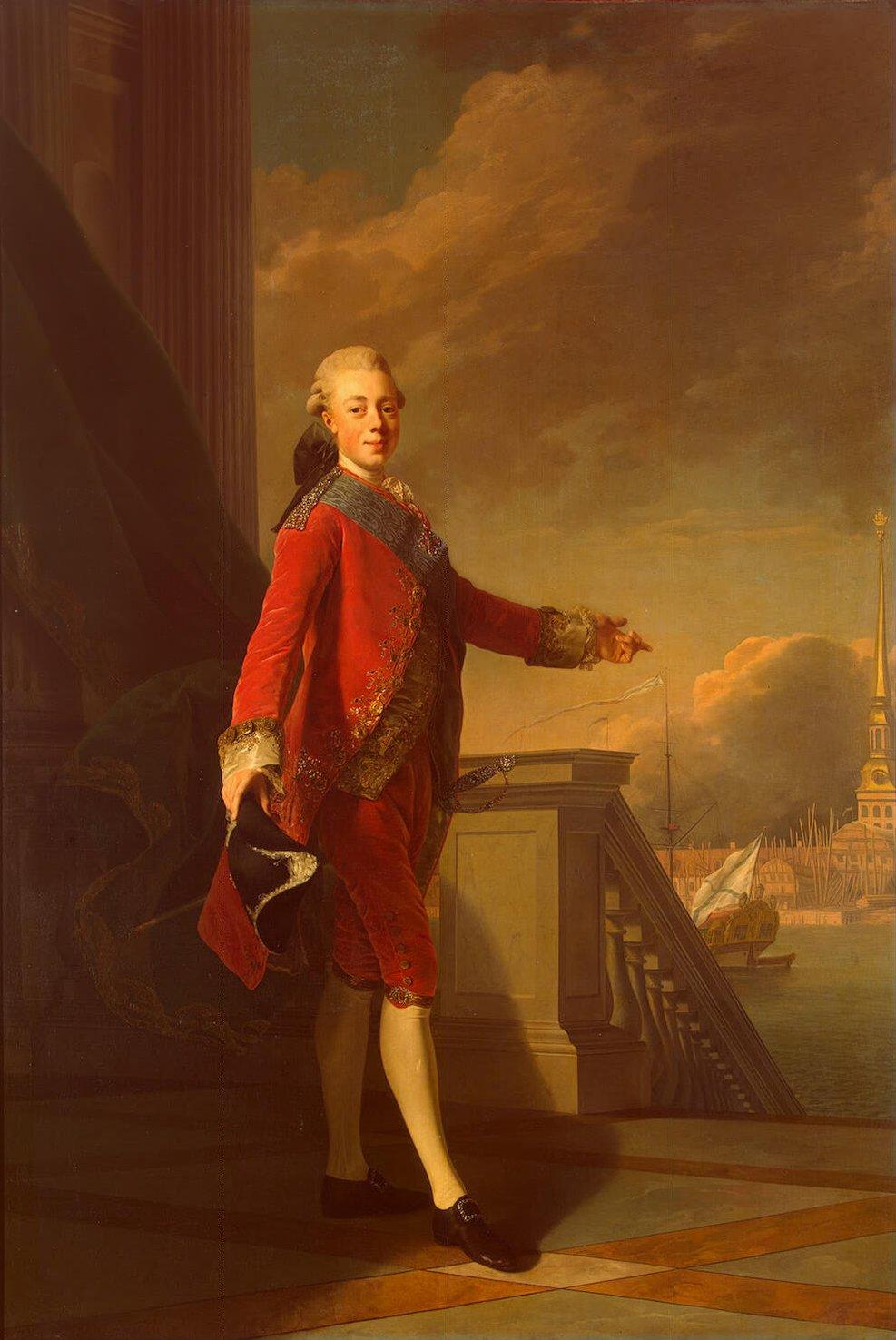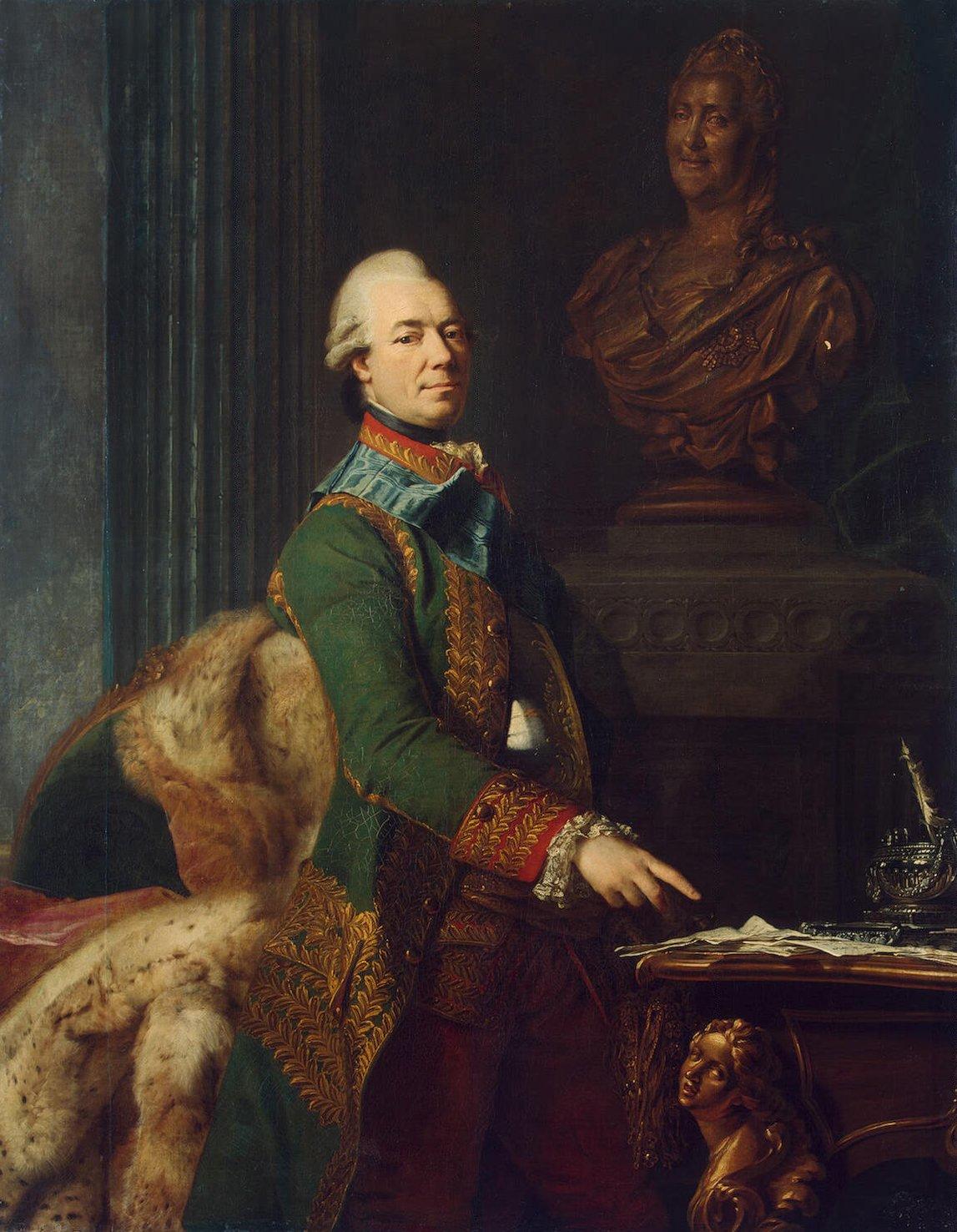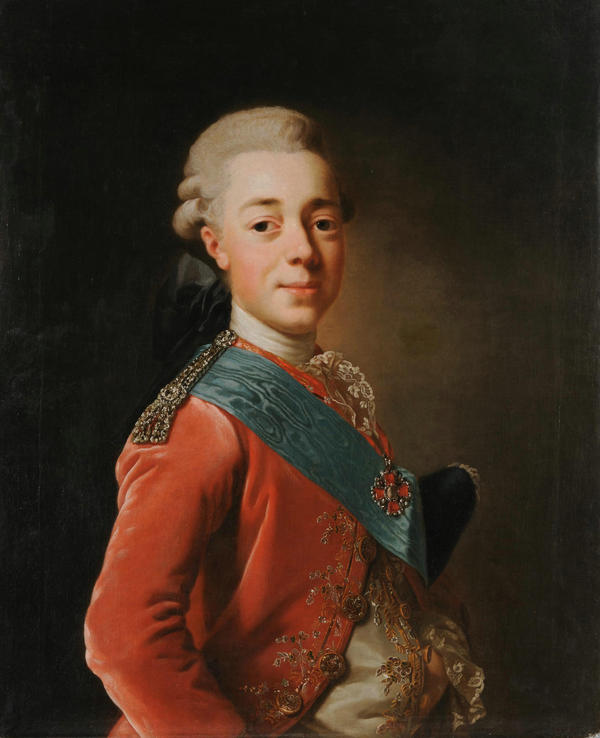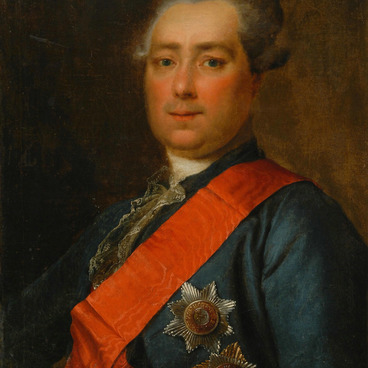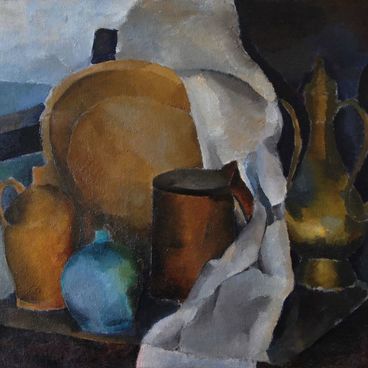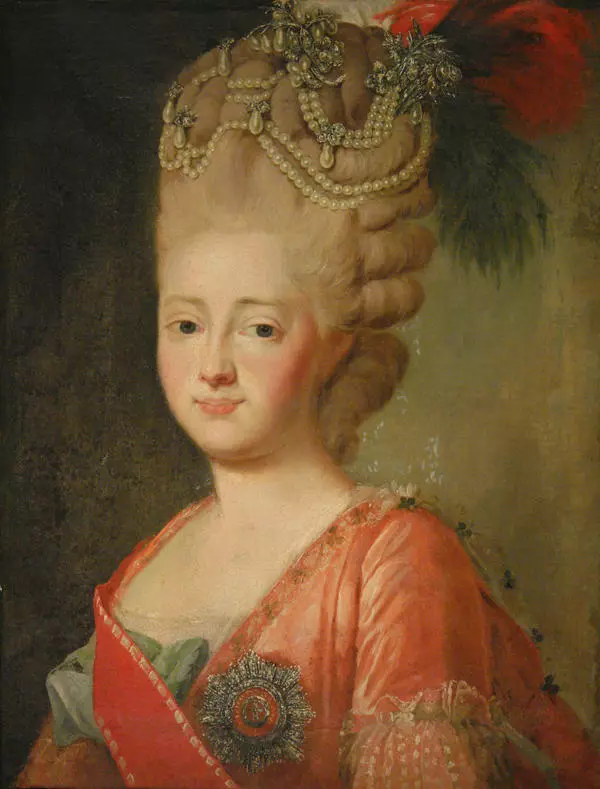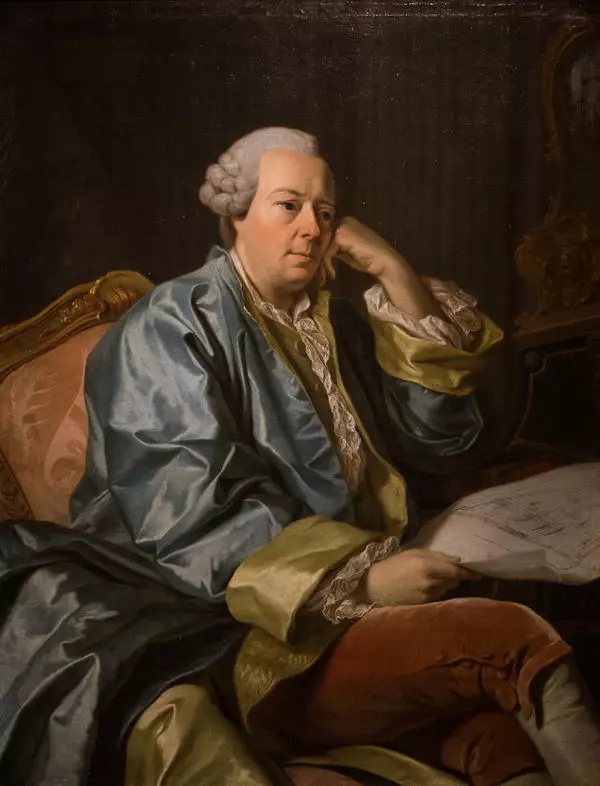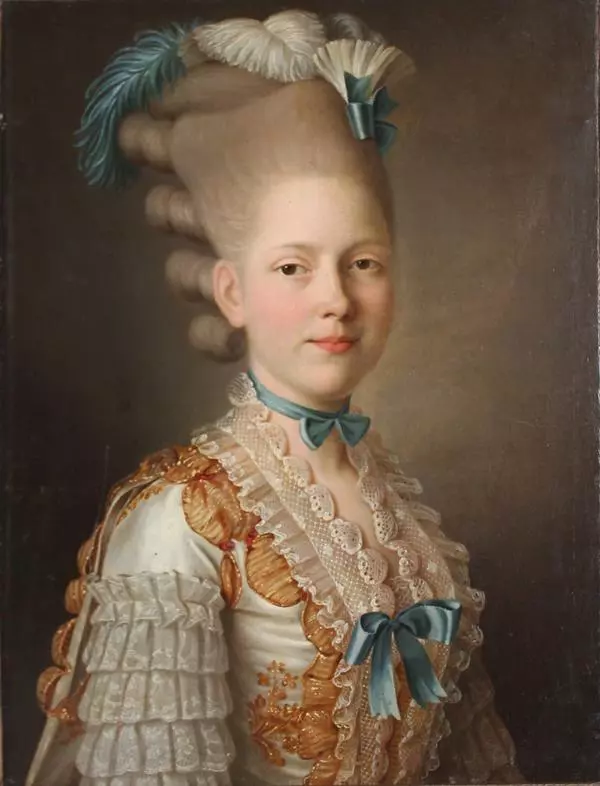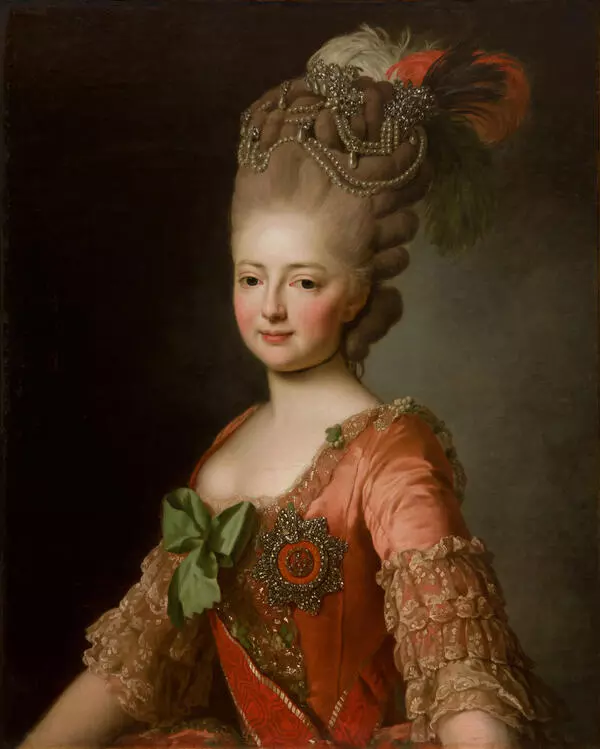Alexander Roslin, a famous Swedish painter, came to Russia at the invitation of Catherine II in 1776. He made a comprehensive gallery of portraits of the crowned persons and Russian noblemen, including Catherine the Great, Grand Duchess Natalya Alekseevna, Count Andrei Kirillovich Razumovsky and many others.
Roslin worked on the portrait of Paul I when he was still young: at the time the picture was made the heir to the throne was under the age of 23. The artist depicted with detail the ceremonial caftan of red velvet, the light embroidered silk camisole and the thinnest lace jabot — all done in French style. One can see the objects indicating the status of Pavel Petrovich — a diamond epaulette, the light blue ribbon of the Order of St. Andrew the First-Called running under the epaulette; the ribbon is overlapped by the Order of St. Anne, the thing that passed to Pavel from his father.
Paul I, the son of Peter III and Catherine II, ascended the throne in 1796, soon after his 42nd birthday. As he aimed to depart from the policies of enlightened absolutism that the Empress mother had adhered to, he issued decrees that improved the life of peasants and introduced many useful army novelties as, for example, comfortable greatcoats instead of traditional broad mantles (epanchas).
On the other hand, many Paul’s decisions in both foreign and domestic affairs were controversial: he almost put Russia on the brink of war with the British Empire and initiated an ill-prepared invasion to Central Asia; he was lavish in granting noble titles to his numerous loyal associates and reintroduced corporal punishment for the nobles; he made the censorship tighter and prohibited the importation of books and notes in fear of spreading ideas of the French Revolution.
In the eyes of his contemporaries, Paul was a despot and petty tyrant who tried to regulate every step in the daily life of his subjects, demanded excessive square bashing for the army and repressed the nobles. Franz Aepinus, one of Paul’s tutors, said, He is clever, but his head contains some mechanism that hands by a thread – if the thread brakes up, the mechanism will screw up and the mind and intellect will go away with it.
Being dissatisfied with the controversial rule of Paul I, the courtiers had organized a series of plots against him, and finally the emperor was murdered in his bedroom in the St. Michael’s Castle in 1801. The conspirators demanded Paul to abdicate but he refused and, in the heat of the quarrel, one of the conspirators, either intentionally or accidentally, – witnesses described the events of that night in different ways, – hit the emperor’s temple with a golden snuffbox.
Roslin worked on the portrait of Paul I when he was still young: at the time the picture was made the heir to the throne was under the age of 23. The artist depicted with detail the ceremonial caftan of red velvet, the light embroidered silk camisole and the thinnest lace jabot — all done in French style. One can see the objects indicating the status of Pavel Petrovich — a diamond epaulette, the light blue ribbon of the Order of St. Andrew the First-Called running under the epaulette; the ribbon is overlapped by the Order of St. Anne, the thing that passed to Pavel from his father.
Paul I, the son of Peter III and Catherine II, ascended the throne in 1796, soon after his 42nd birthday. As he aimed to depart from the policies of enlightened absolutism that the Empress mother had adhered to, he issued decrees that improved the life of peasants and introduced many useful army novelties as, for example, comfortable greatcoats instead of traditional broad mantles (epanchas).
On the other hand, many Paul’s decisions in both foreign and domestic affairs were controversial: he almost put Russia on the brink of war with the British Empire and initiated an ill-prepared invasion to Central Asia; he was lavish in granting noble titles to his numerous loyal associates and reintroduced corporal punishment for the nobles; he made the censorship tighter and prohibited the importation of books and notes in fear of spreading ideas of the French Revolution.
In the eyes of his contemporaries, Paul was a despot and petty tyrant who tried to regulate every step in the daily life of his subjects, demanded excessive square bashing for the army and repressed the nobles. Franz Aepinus, one of Paul’s tutors, said, He is clever, but his head contains some mechanism that hands by a thread – if the thread brakes up, the mechanism will screw up and the mind and intellect will go away with it.
Being dissatisfied with the controversial rule of Paul I, the courtiers had organized a series of plots against him, and finally the emperor was murdered in his bedroom in the St. Michael’s Castle in 1801. The conspirators demanded Paul to abdicate but he refused and, in the heat of the quarrel, one of the conspirators, either intentionally or accidentally, – witnesses described the events of that night in different ways, – hit the emperor’s temple with a golden snuffbox.

